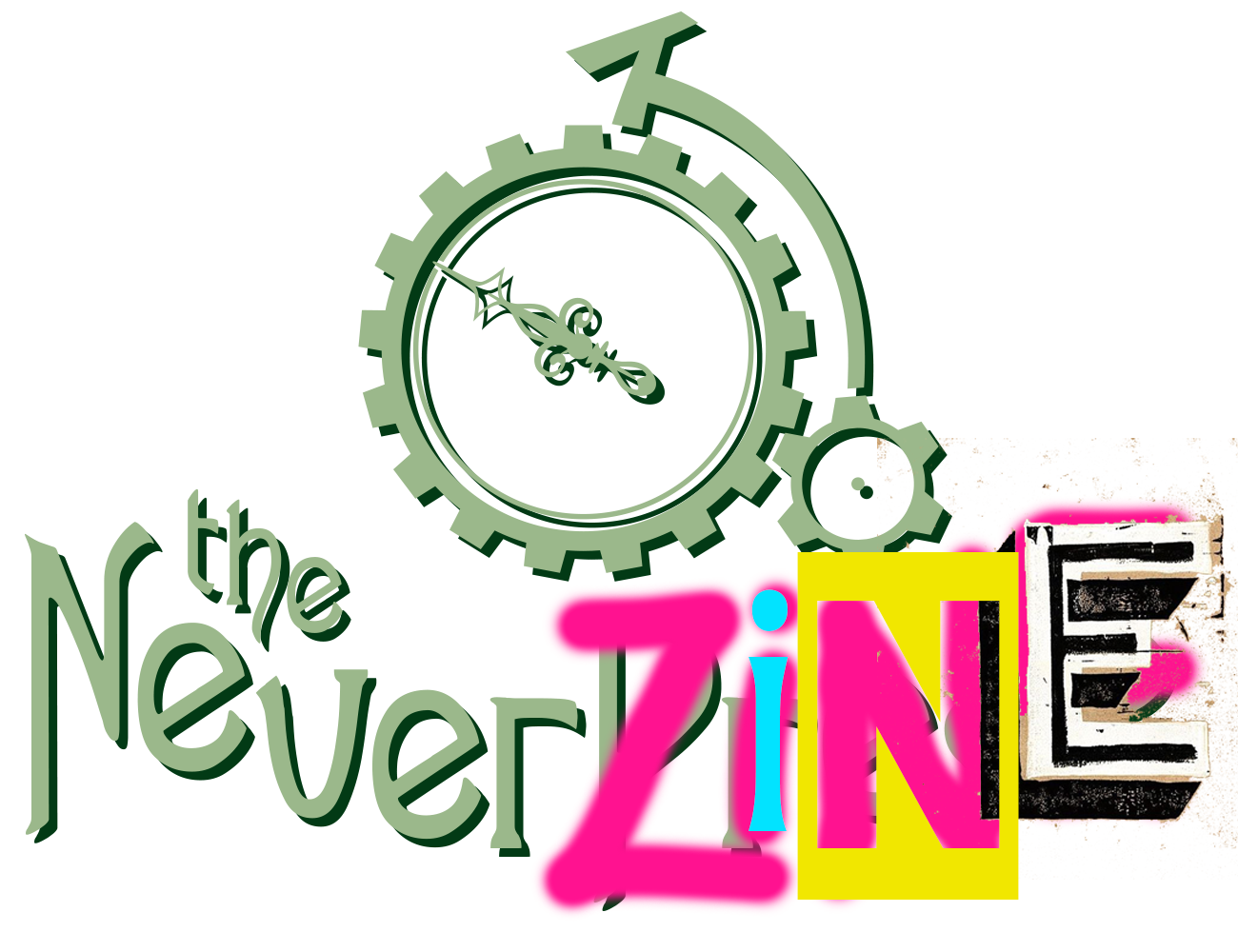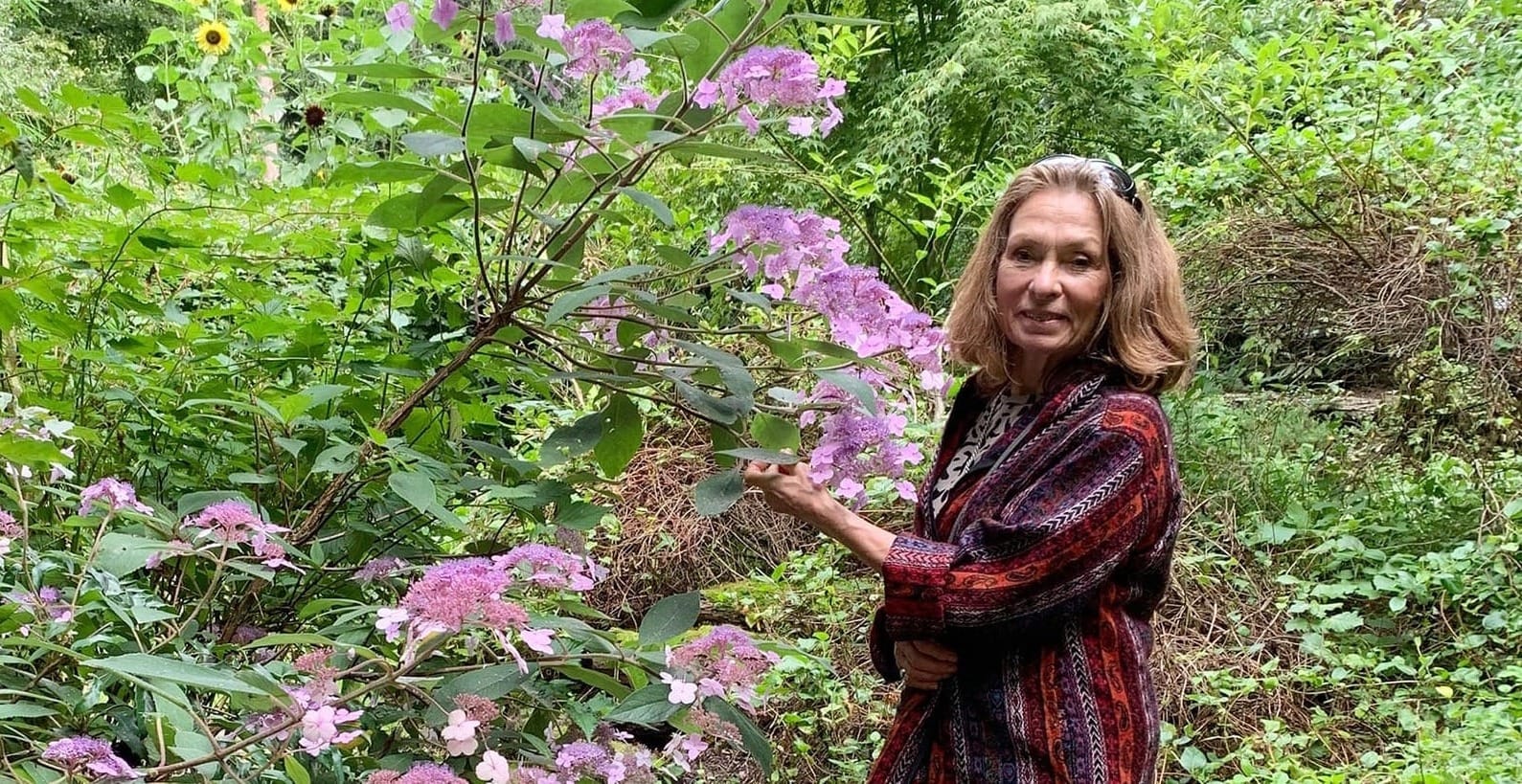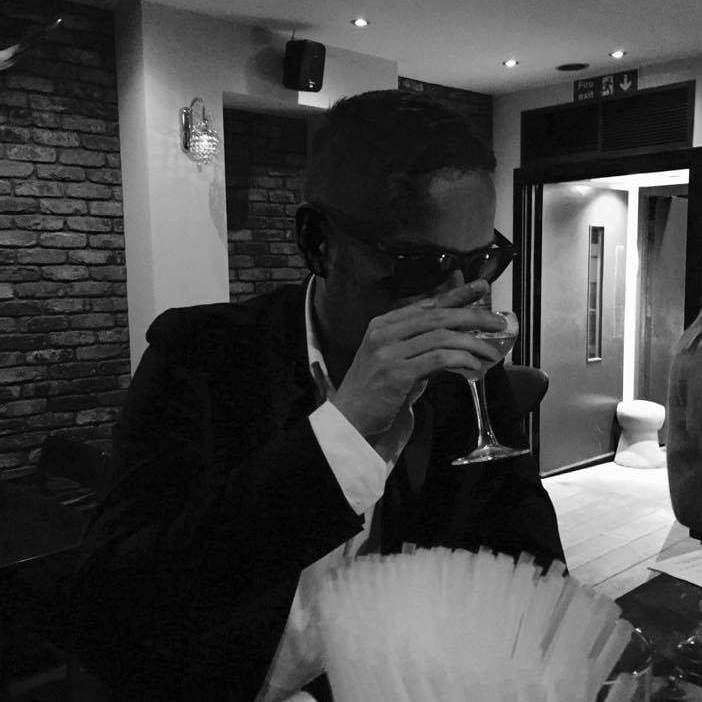Beautiful ink paintings via traditional techniques from an artist who is anything but traditional; an artist who has always gone their own way, through thick and thin.
We had the pleasure of meeting Judy at the Open Studios event for Thames-Side Studios - a sprawling open house over a huge former industrial estate, packed with artists and craftspeople, kind enough to open their sanctuaries and let us peak inside. It was a hot day, it was bustlin' and we were zipping about like crazy. Until we came to Judy's little oasis of calm. Her studio was nestled away in Block 7 - and it was a welcome, tranquil spot of serenity and stillness. Breathy with plantlife, and the carefully rested tools of trade displayed for us. On easels and upon the walls, the most beautiful floral inks - vibrant and delicate, almost singing to us. We sighed as we stood in that little studio. And Judy herself, peaceful and erudite was so welcoming and gentle as she guided us around the space. Our conversation was quiet, in depth and over too soon... so we just had to bag more time with her and bring her wonderful work and deep insight to you wall.
Friends of TheNeverZine, we give you - Judy Head...
Hey Judy! Thanks for talking to us today! Let's go back to the start. Please may you tell us about your creative journey so far?
Coming to London in the early 1970s and not being an academic student, I was totally unprepared for the fiercely competitive college application system. So I was grateful to be accepted to study graphic design in a small suburban art school with very old-fashioned methods of teaching. Advertising and marketing agencies were fast becoming the hot ticket on the commercial London art scene. It was the must-have job, but only for the well connected and better informed! For me, coming to London from rural Dorset, a small college teaching life drawing, print-making, photography and hot metal typography was a good choice. However, that alone was not going to ensure me a position as an illustrator or designer in one of those cool London agencies!
A small printer in north London employed me as a paste up artist and occasional designer. As a paste up artist I was a disaster! But I could draw, visualise and design. So the boss gave me an instant print shop to run instead with a small space to produce layouts and visuals when needed. Great fun and great experience, but living in London was expensive and I needed to move on. The print industry seemed to hold limited opportunities for me, so when I was offered the chance to work in the fine jewellery industry, I grabbed it. This was a small, global, industry and I worked for a high-end diamond business in a multitude of roles, including sales, marketing, PR, visual merchandising, design and art direction.
The age of the personal computer – and in particular Apple – was the foundation of my own graphic design business. It was 1990 and suddenly I could undertake assignments that would never have been possible in my college years. I embraced the freedom of the digital age and started my own marketing and graphic design business, specialising in the fine jewellery industry. But the bankers crash followed by a brief period of ill health, made me think seriously about what I wanted for the future. The digital world was no longer fun and it was time to simplify my life.
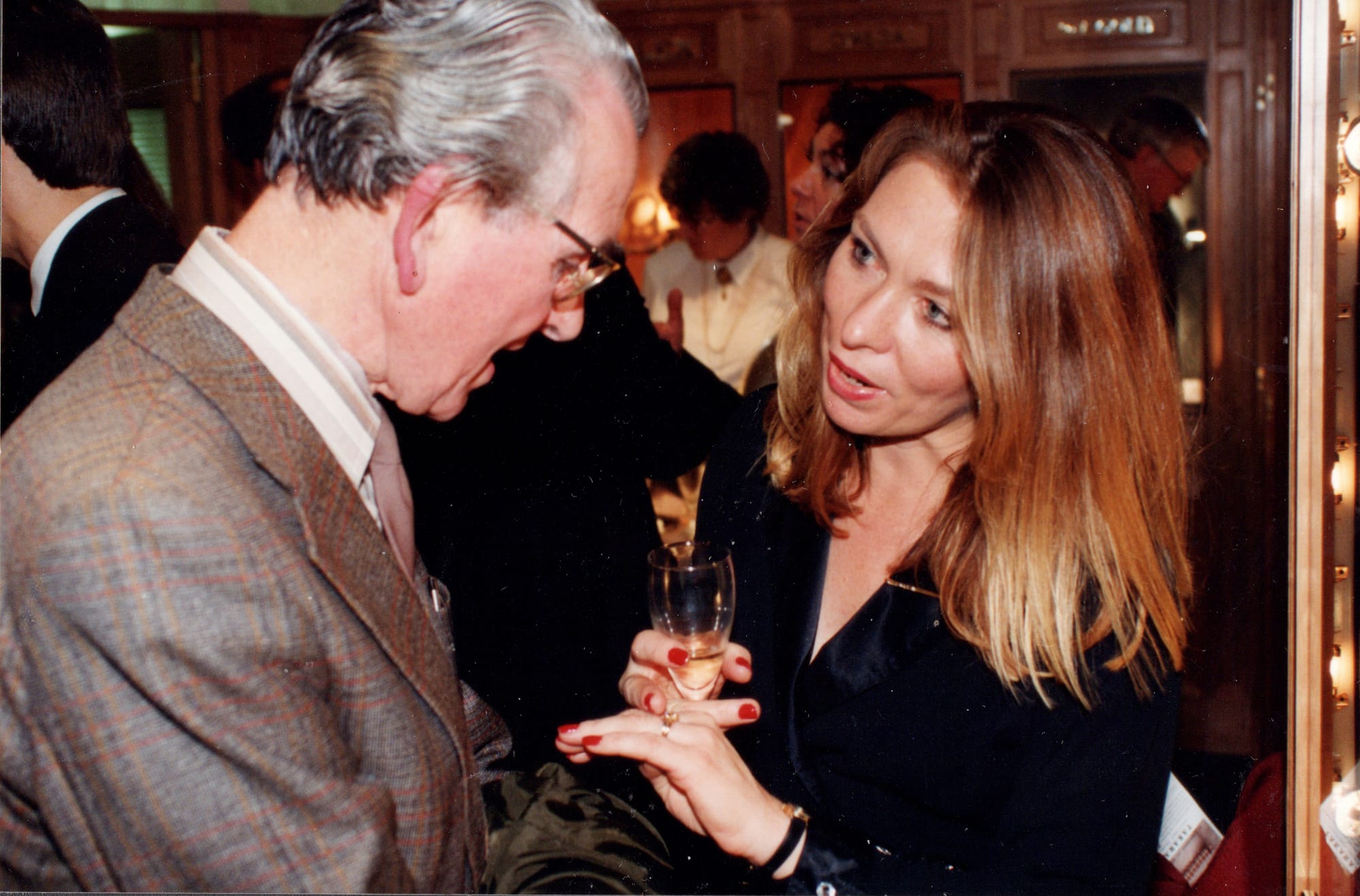
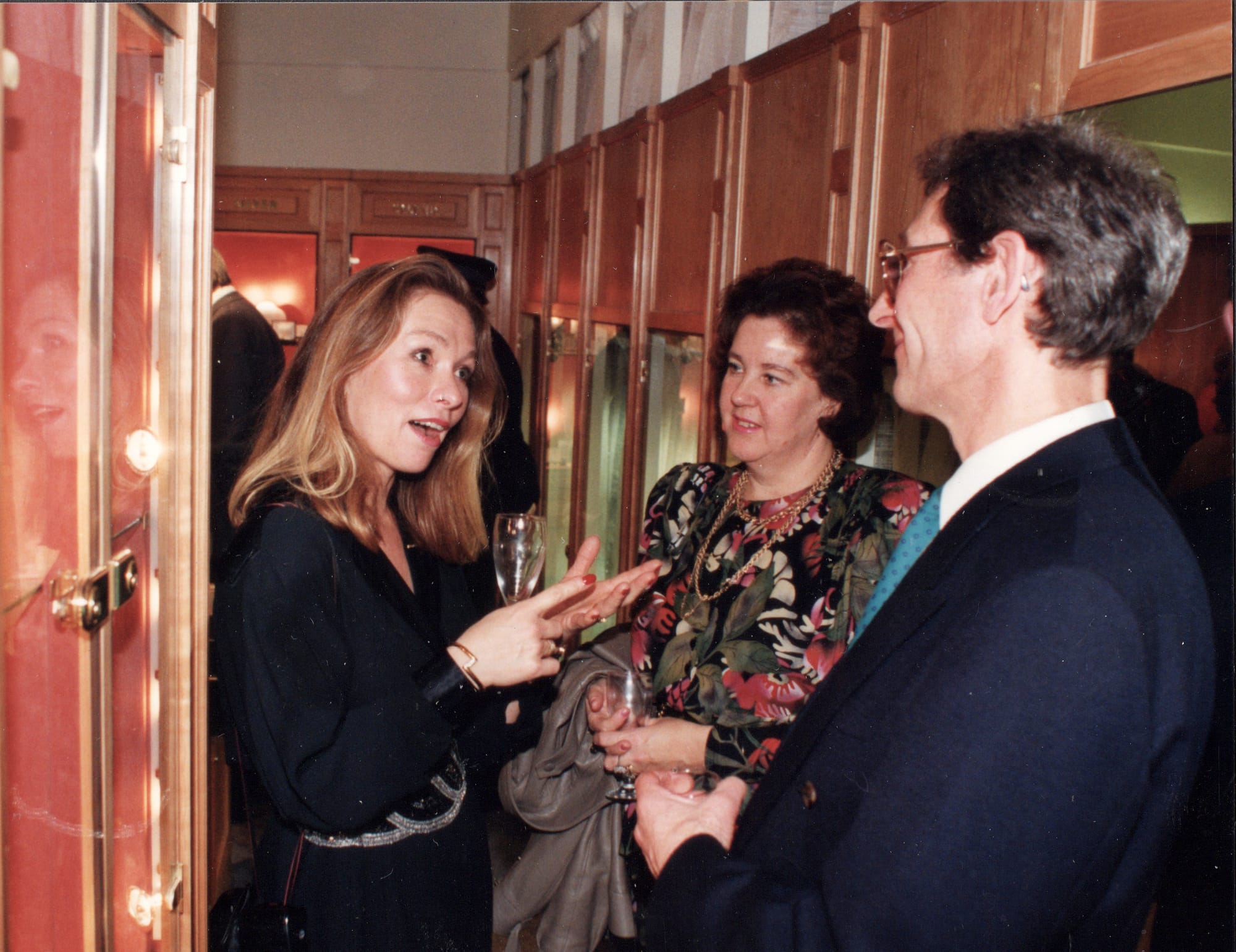
It was at this point in my life that I discovered Talia LeHavi, a specialist in Asian art who had studied the work of the Japanese calligraphers and ink-painters under contemporary Japanese masters. The calm, meditative approach coupled with the Buddhist philosophy, created the perfect space for reflection. In 2017, I moved my studio out of London to Thames-side Studios, situated on the banks of the river by the Thames Barrier.
The reason I found myself specialising in the portrayal of flowers, trees and the natural world about me was Covid. I used lockdown to study the character of flowers and plants, and to record them.
Cycling to the studio through quiet streets and parks, I can photograph or sketch the plants and the changing seasons. 18 months ago, I joined Skylark Gallery – a collective of artists represented both on line and in a small gallery on Gabriel’s Wharf. Slowly, I started building a collection of ink-paintings. Using the materials and techniques of the traditional Japanese artists, I paint subject matter that is indisputably British. The English garden and wild flowers! I am also working on some intaglio and letterpress prints that I hope will be ready for the end of the year.
So the Covid lockdown in 2020 was the catalyst. This year, I closed my business to focus totally on ink-painting.
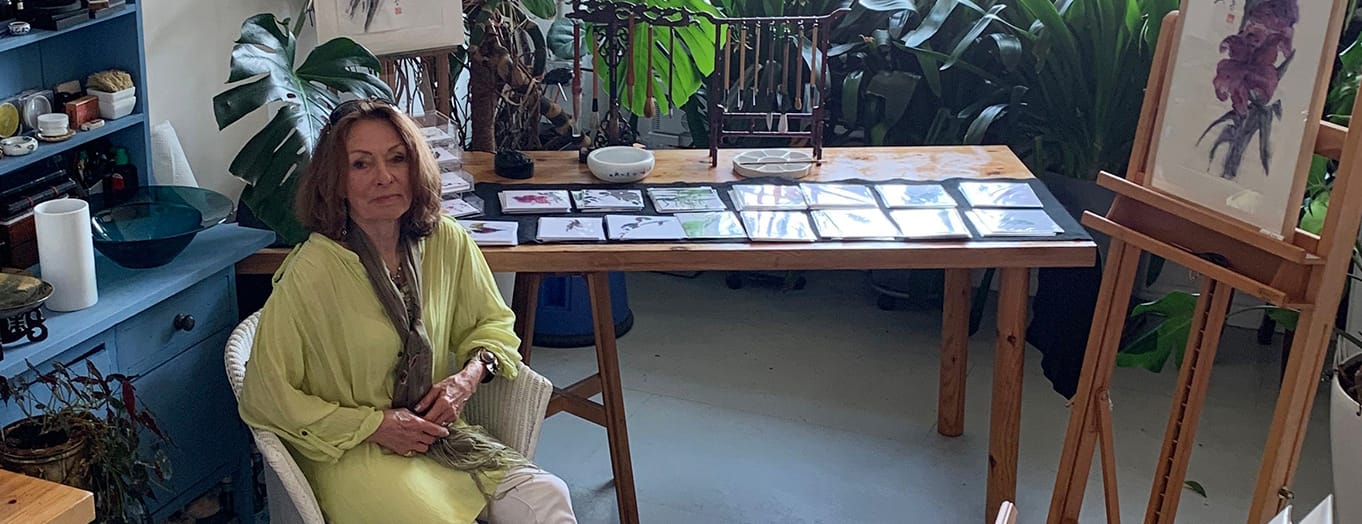
What is your creative process?
Inspiration comes from the natural world, the changing seasons and how our plants cope with our increasingly extreme weather. As I am based in two places – London and North Norfolk – I walk and cycle everywhere. There is a particular smell that I associate with the changing of each season, but the coming of spring is a big moment for me, especially after a long, dark winter. The smell is fresh, sharp and spicy!
Preferring to paint in my studio, I sketch and take photographs of things that interest me. It could be a tree, broken by the spring storms of 2023, just as green shoots were appearing. Or the tightly folded buds of pink cherry blossom suddenly emerging into warm sunlight, followed by tiny, delicate, copper coloured leaves.
Amongst the decisions I make at this early stage, are what paper will best hold the ink to enable me to work in fine detail, but without losing the happy accidents – the spreading ink of a wet brush, for example. I prefer paper allows me to make broader, free brush strokes with plenty of absorbancy in the paper but also enable me to re-create the vivid colours of the flowers.

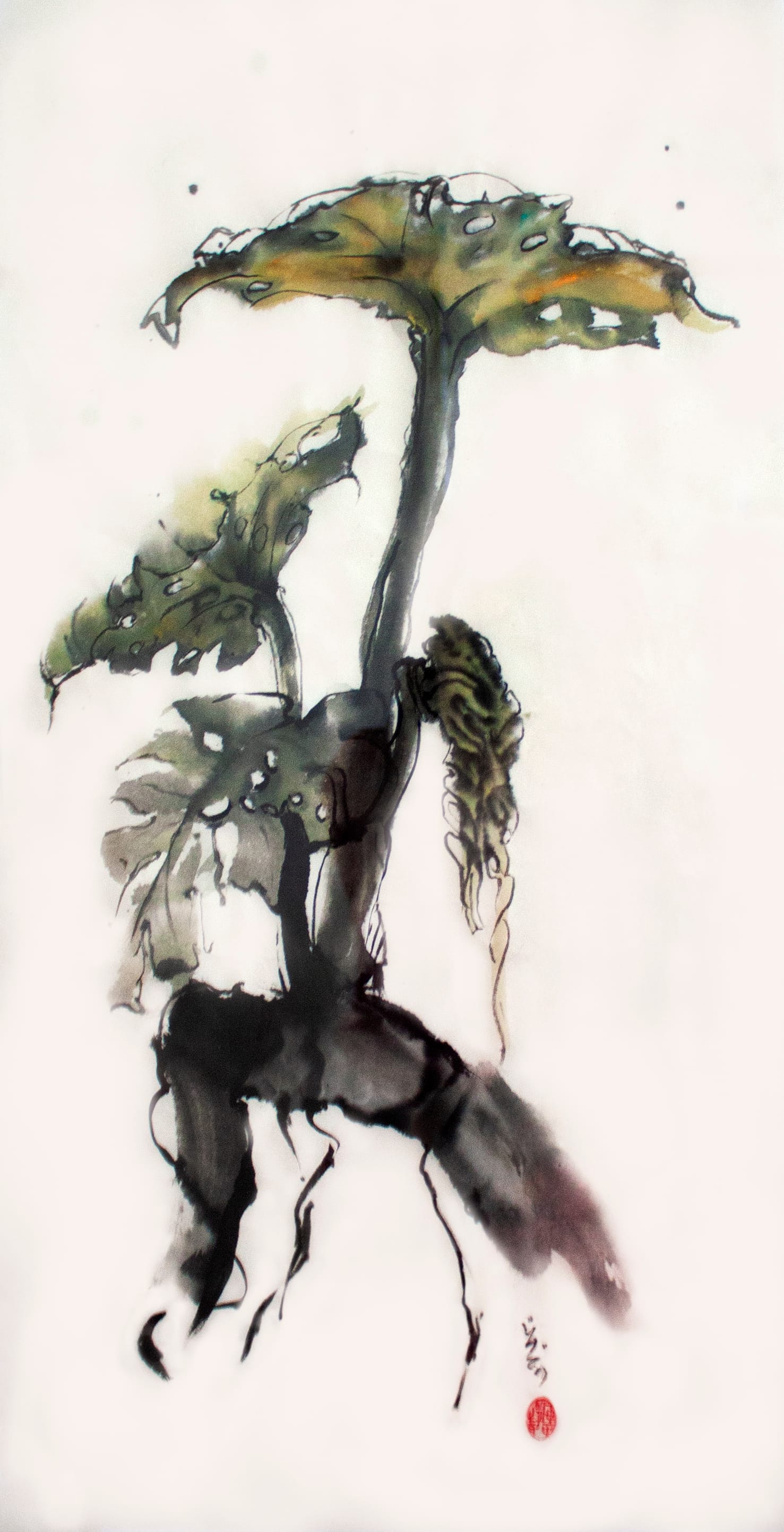
Take us through the practical steps of your medium – what decisions and choices are you making?
At college, when I first learned about the importance of the work of the Chinese and Japanese painters and calligraphers, I purchased some ink sticks, a stone and a brush. But I had no idea how to use them and my tutors did not know either!
Today, with a wealth of knowledge at my finger tips and a lot of help from Talia LeHavi, I have learnt to use the traditional brushes, black Sumi and mineral inks, applied to rice, bamboo, mulberry and rag paper, formulated for Sumi-e painting and calligraphy. The papers all react differently to the ink. Some crease whilst others remain stable, or the colours can change, losing clarity as well as the fresh vivid hues of the Japanese inks. I am still experimenting with paper and have yet to find one that totally fulfils my evolving style.
The big Japanese and Chinese brushes are amazing to use. Even the biggest brush can be used to paint the finest lines. Inside each Asian brush is a ‘well’ of soft hair that holds the ink and enables the artist to make many strokes before refilling.
The equipment – the brushes, paper, ink sticks and ink stone – are known as the ‘Four Treasures of the Study’. All the equipment is decorated, sometimes carved or painted. The beauty of the simplest and most humble tools adds to the pleasure of painting.

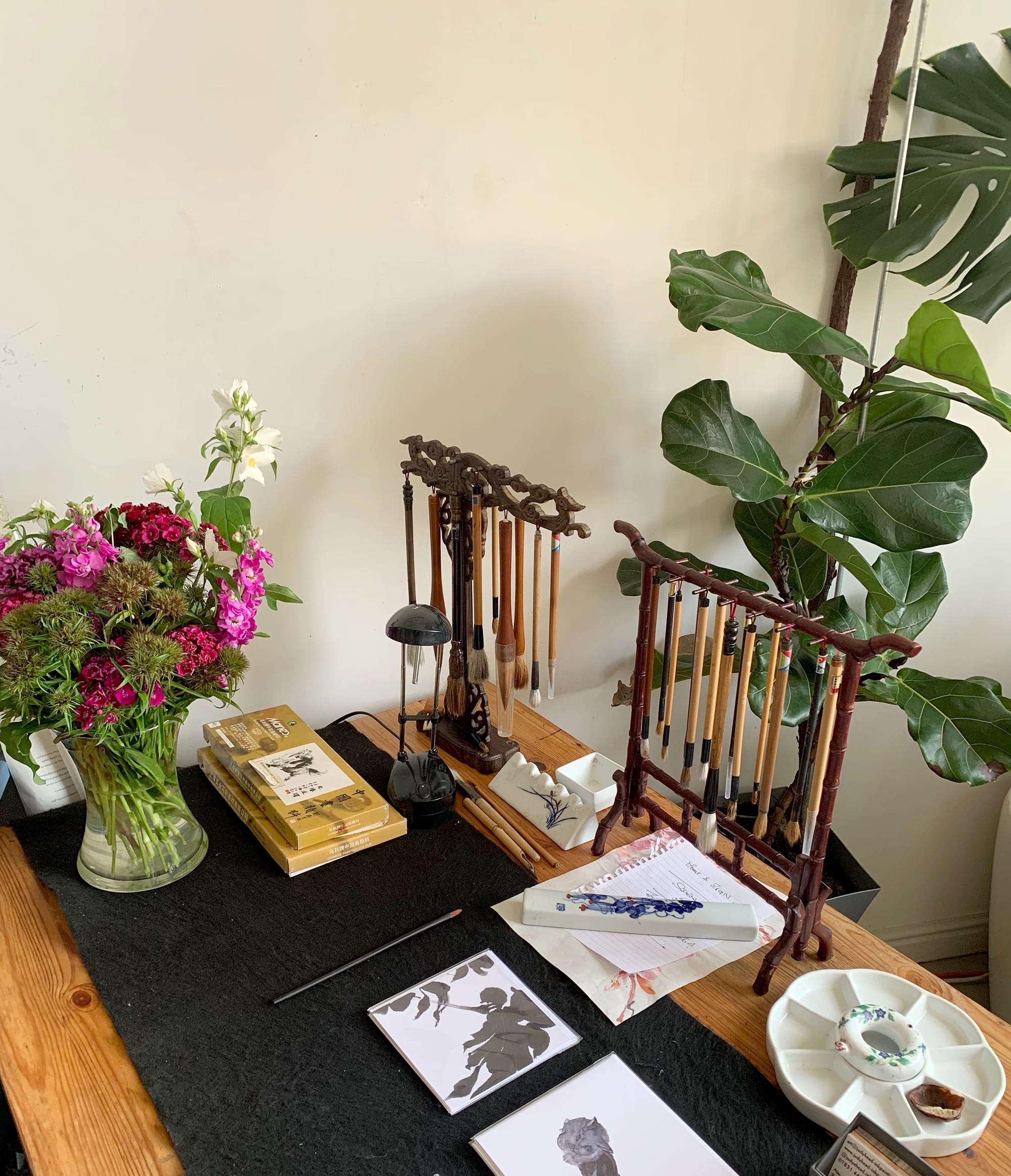
What is it about your medium – did you find it, or has it always been there.
Having been so involved in the digital world for so long, using traditional materials in a traditional way is pure joy! The complexity and expense of working digitally and the need to put functionality before design and well-structured layout, was very frustrating. The simplicity of Asian art, the use of space, the reverence for the materials, makes the very act of putting paint to paper a pleasure. The choice of paper and brush can make the difference between a lifeless, static image and brushwork that is fully of energy and excitement.
The materials and methods used in Chinese and Japanese art have been with us, relatively unchanged, for over 2,000 years, having been introduced by the Han dynasty in China, (c 206BC to 220AD).
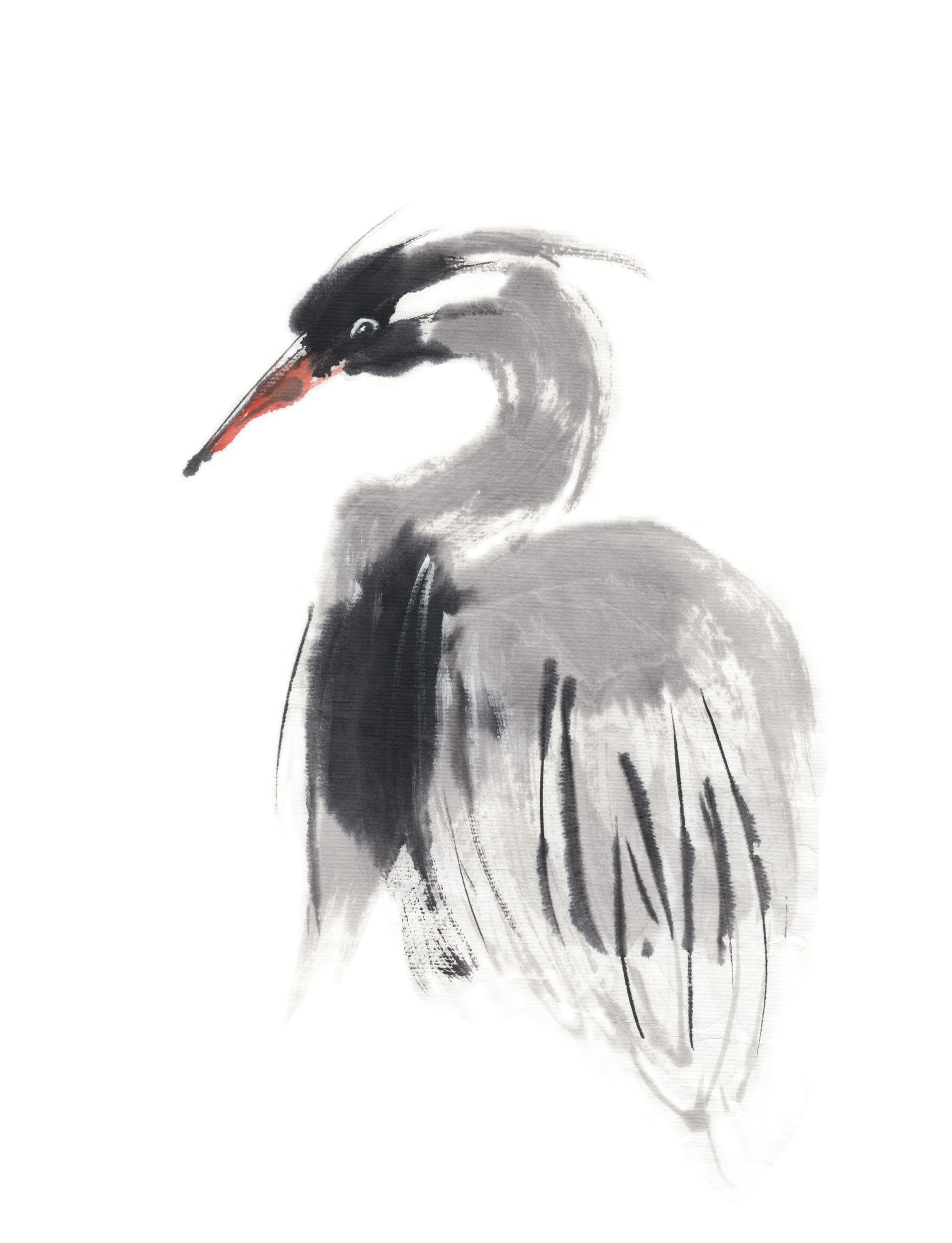
You work in traditional way, with tools, inks and paper – are these imperative to your work, to honour the heritage or are they the best tools to express your voice?
I use the traditional materials and prefer to apply the rules regarding the balance and harmony of Asian art. But the subject matter I have chosen is the beauty of the English gardens and countryside. I am not trying to be a Chinese painter. Conscious of our rapidly changing climate and the effects of pollution, I am acutely aware of what we have already lost or are about to lose. Yes - the simplicity of the tools and equipment are part of the story, as is the structure of the layouts where space plays as big a part in the composition. Also the dynamic brush strokes adding energy to the composition.
It is an extraordinary experience to look at a painting of a dragon on silk and realise it was created 400 or more years ago. The tools, the ink and paper, together with the ‘rules’ that apply to composition and the influence of the Buddhist philosophies, never fail to make me think about my approach to each new piece. The heritage is ever-present and a reminder that so many artists before me have followed the teachings of the masters.
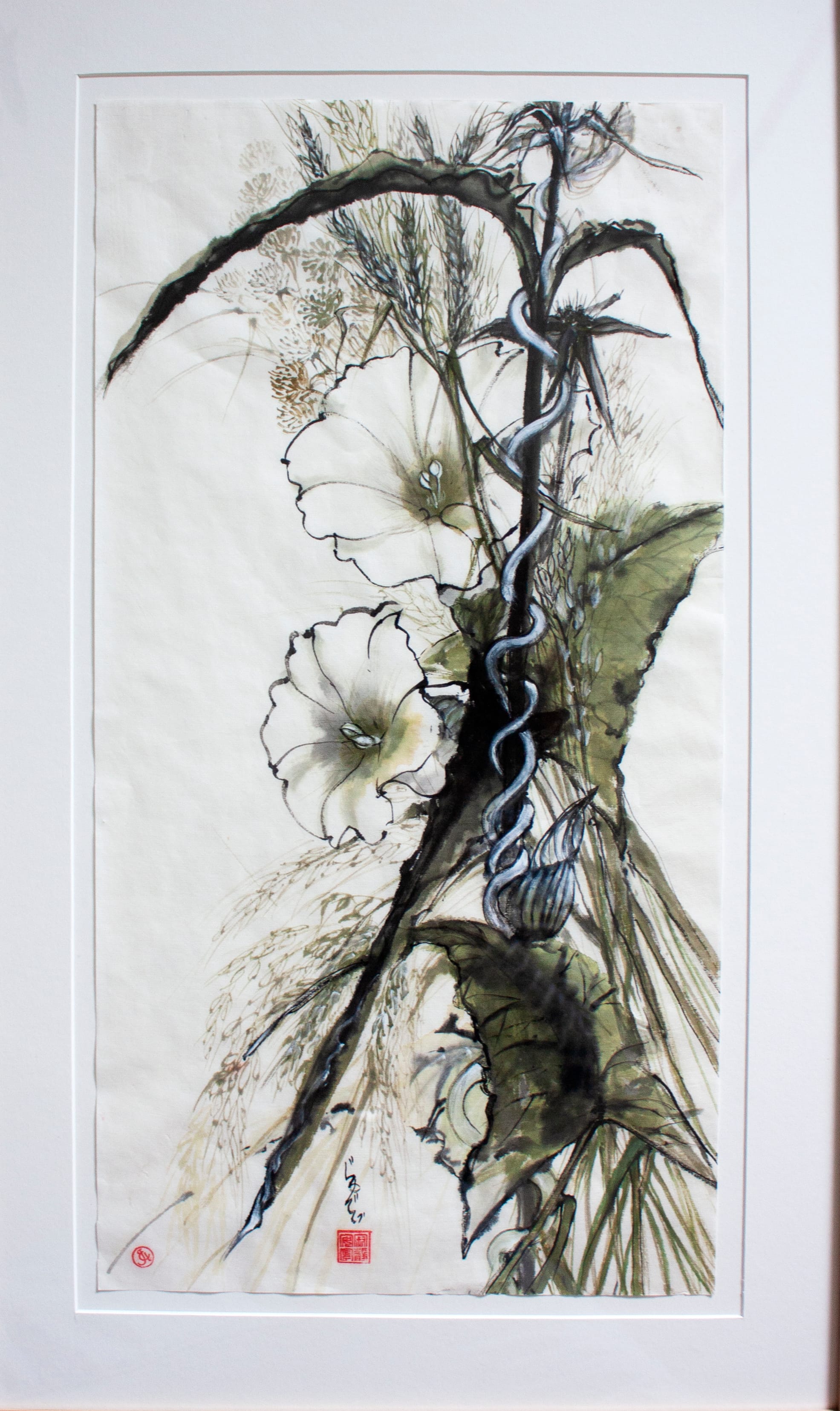
Have there been any moments of true doubt or insecurity in your journey and how did you overcome it?
Yes – many doubts and many insecurities. It was a big change to go from a client brief with all the limitations of budget, time and brand identity, to self imposed choices and limited access to a potential market, not knowing how my work would be judged. My first sales came from the first Open Studios after lockdown. Encouraged by the enthusiastic stream of visitors, I placed my paintings in a couple of other exhibitions with mixed results It was my framer who suggested that I approach Skylark Gallery, a well-established collective of artists based on Gabriel’s Wharf on London’s South Bank. I was accepted and so by the end of 2023, I was part of the team doing my shift in the Skylark gallery, hanging my work and placing more pieces in their on-line shop.
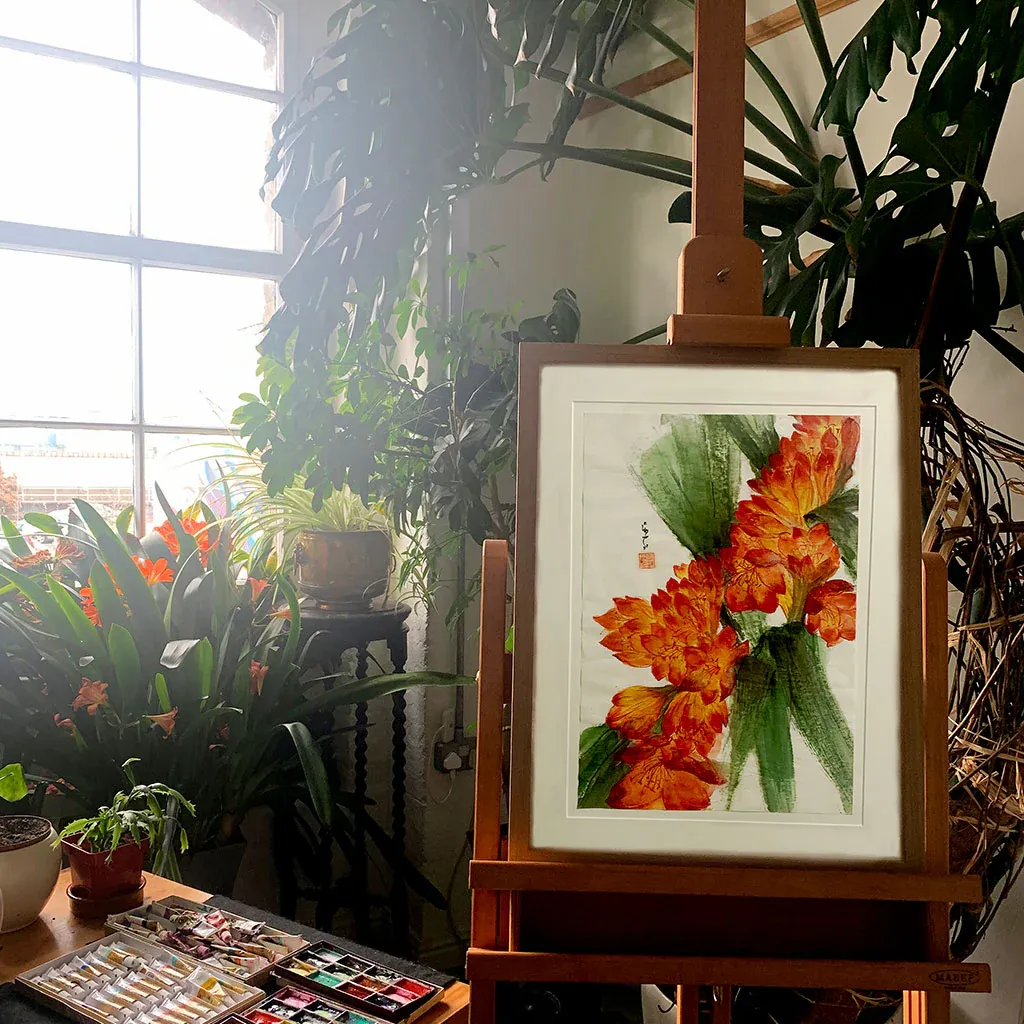
Exciting though all this was, I struggled to produce new work and it wasn’t until this year and I overcame the imposter syndrome and self doubt and began to work effectively again. These moments of panic and loss of confidence are familiar territory to me. I think it comes from the realisation that people might think I am an artist and so everything must be a masterpiece. Of course it wont be and anyway, who am I to judge it? It is something that plagues many creative people.
Releasing myself from the pressure of making art, just painting with whatever comes to hand, and enjoying the process, seems to remove the fear of letting myself and everyone else down. Strange though it may seem, success and failure are equally scary concepts!
You have come to thrive as an artist later on in life – what was the inflection point? When and how did you ‘go for it’?
Covid. Recognising that my graphic design and marketing business was not going to grow. The post Covid world is very different - more sombre, more frightened, more stressed. Less open to risk. So the opportunity presented itself, during lockdown, to change and make ink painting the focus of my work. I still do occasional graphic projects, but I finally closed my business early this year. It has proved to be the right thing to do.
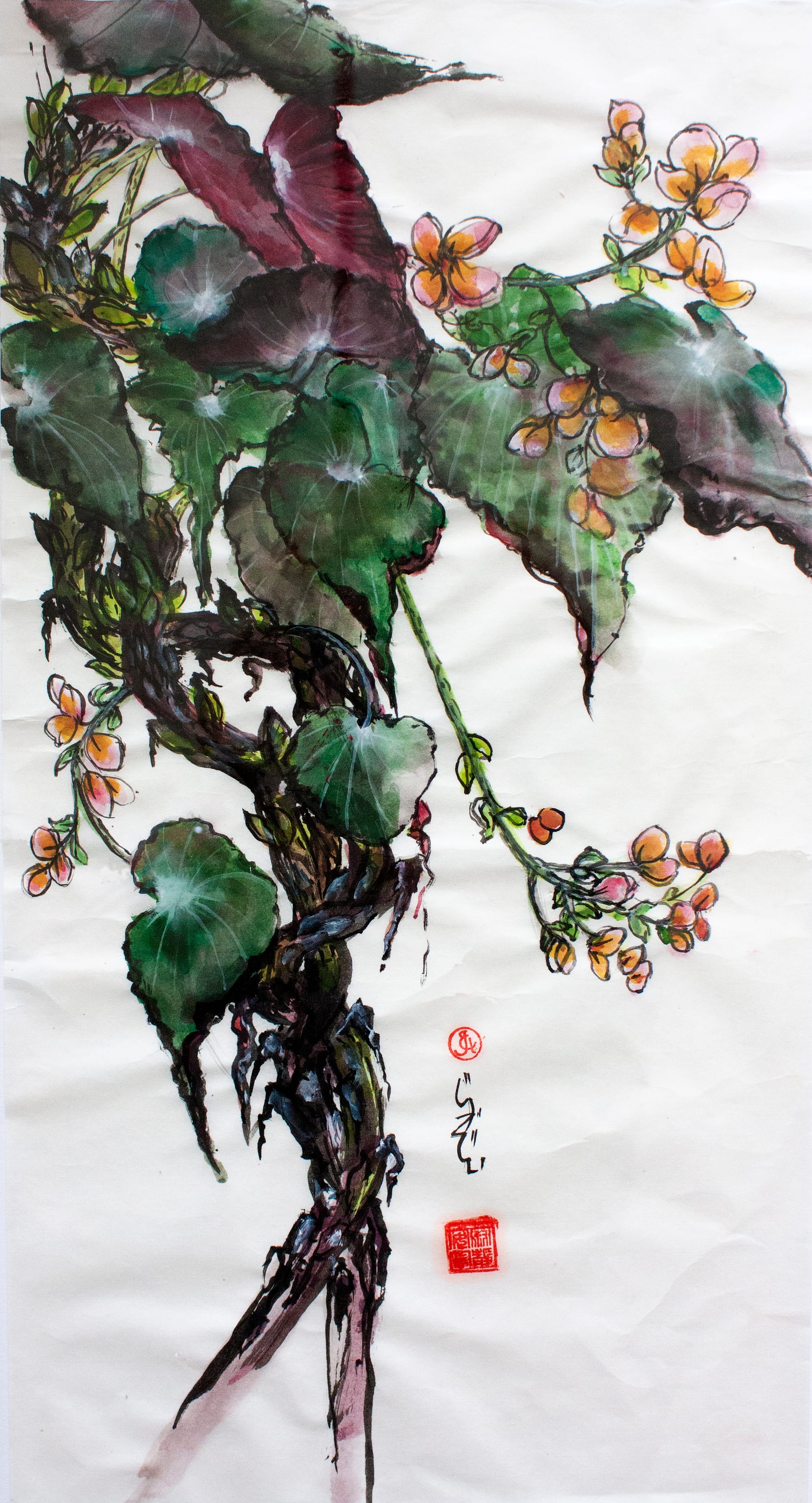
It takes extraordinary confidence and courage – did you build up to this, or were you waiting for the right moment?
I discovered when I was very young, after leaving art school and trying to find some way into the world of graphic/marketing/advertising, that I am not cut out to be a employee! I wanted to control my own destiny, for better or worse. I had not expected to find that my graphic design skills and values would have no place in the 21st century and I was not confident that I could cover my costs as an artist. Now, however, in these unusual times, I recognise that I can do exactly that , but I must master the fine art of using my time effectively!
It was neither courage nor confidence that made me take this step. It was the only way! The timing was good as I had the experience of working alone, being my own boss. It was also recognising that I had to grab the opportunity or that moment would be lost.
Knowledge comes with age and experience rather than self-belief. Being an artist, always striving to do better, means that we rarely see our own work in the same positive way of someone who sees it for the first time and with whom it resonates.

You say that you are still in a learning phase – do you think this ever ends? Does one ever, truly become a master of their art or is that something thrust upon them?
We are always exploring and learning. That is the nature of the creative spirit. However, I believe that people who have studied their particular field for a long time can become masters, but they are probably the ones who would be least likely to seek that sort of accolade.
Creativity requires a deep level of thought and commitment – how does that balance with day to day life?
Yes – life gets in the way of creativity. I block out days when I will go to the studio, turn the phone off, and focus. In my beautiful studio, I am surrounded by music, books, art and artists. I listen to music, sketch or take photographs of things that appeal to me and read if I need time to consider what I am doing. My studio over-looks the River Thames, and I have filled it with plants and flowers. It is a calm and inspiring environment, a magical little world away from reality.
Where does it come from?
If you open your mind and look, inspiration is all around you. But you have to feed your mind with information that can inform, inspire and enthuse you to know more. Creativity is also something that vanishes with the speed of light if we do not practise.
Our brains need sleep as well. But whilst we sleep our brain is functioning. So feeding our brain with creativity will bring rich rewards the following morning.
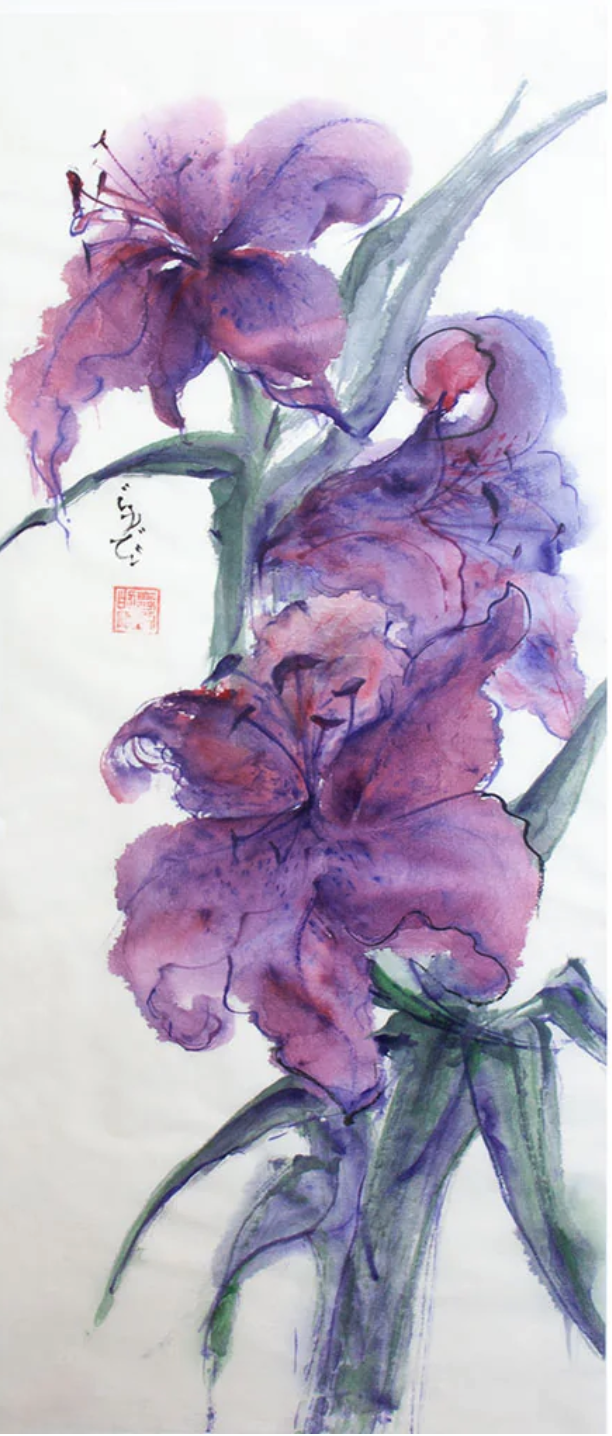

Your voice – was it there from the start, or is it an on-going quest to discover and define it?
It took a world pandemic to make me certain of what the focus of the rest of my life was going to be. My 16 year old self would have considered painting flowers very nice but a cop-out from making a grand statement about the more threatening aspects of life in a 1950’s and 60’s post war world! Now age and the desire to simplify those grand visions of childhood have made me sure of what I want to say. We all need to be happy with what we still have, and to appreciate living in the now. Let us all replace some of that discontent with gratitude.
Live and be present in every moment. A collector of mine once told me that the reason he bought my paintings was because they made him happy. How brilliant is that?
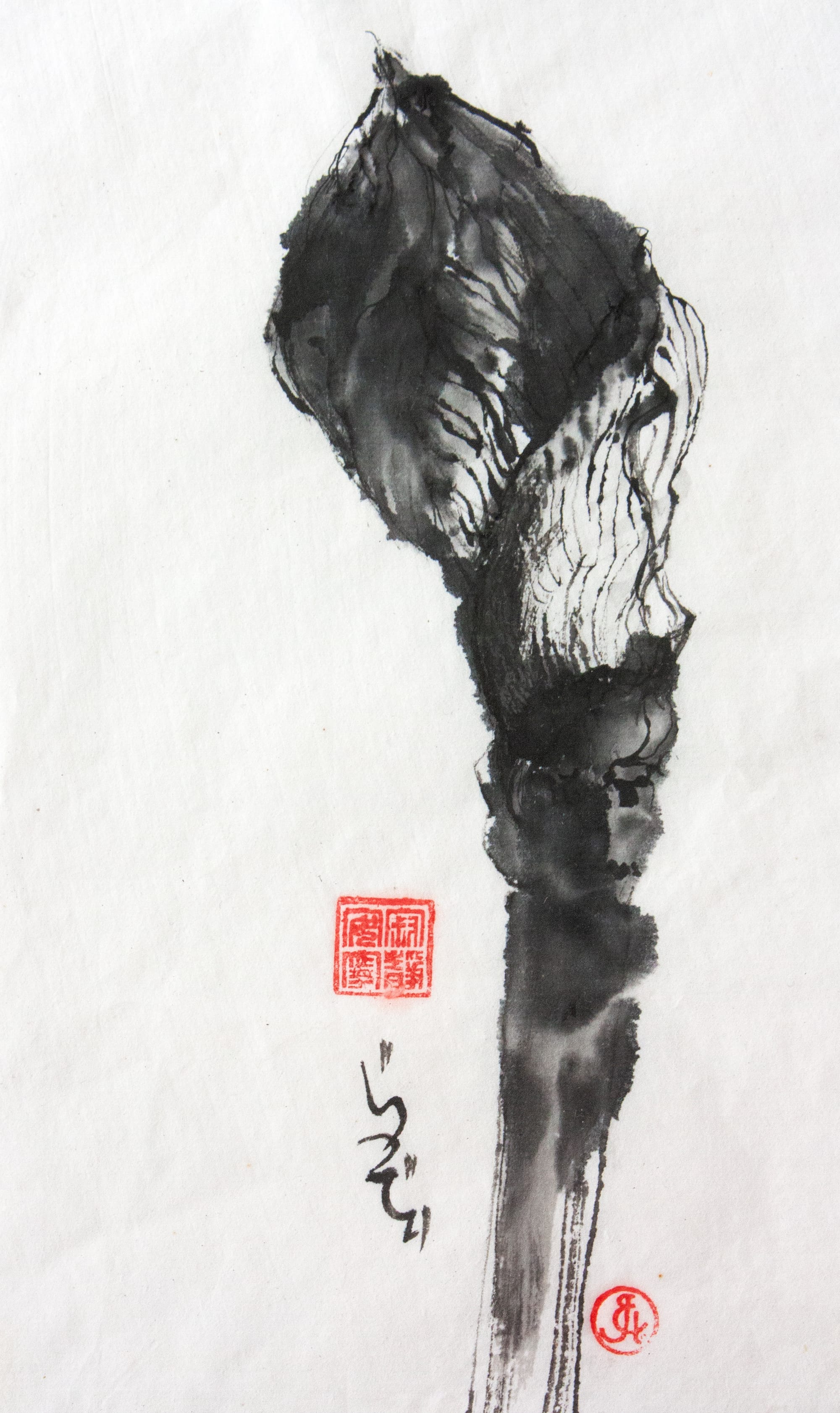

How can art help us?
Art can help both a participant/creator and a casual observer. It can entertain and inform. It can reveal a fresh new angle to a familiar situation. It can make us think and question instead of blindly accepting the inevitable. For the person creating the artwork, there is total involvement and focus.
Contrary the popular belief, we are not always happy with what we have created. I can sometimes take a long time to like - never mind love - what I have painted! But there is a curious sense that is somewhere between total calm and nervous tension, which I experience when I am involved with a painting
How do you like to work?
As I have got older, I prefer to the mornings to work. Cycling to the studio on a summer’s, morning, opening the window and playing music is the very best start to my day. The music might be Hildegard, Hilliard Ensemble or Philip Glass. I start with something classical, moving onto the jazz later in the day. I like to work surrounded by my plants and flowers, on or near to my easel or work table. I spray the room with water perfumed with frankincense or rosemary. When I begin a new piece, I will make the black ink by grinding the black ink stick on the stone. It is simple ritual and a form of active meditation.
Creating a safe and calm space to work is very important to me.

Sometimes it’s better to leave an idea that isn’t working and move on, and sometimes it’s better to keep going and wrestle it into being. How do you know when to step away, or when to push on?
I am conscious that I will fiddle with a painting if I am dissatisfied, thinking my messing around with it will improve it in someway. It invariably doesn’t. Overworking a painting is never an improvement. The moment to walk away from a piece is when I am bored, frustrated or angry or when I don’t know what to do next. It is amazing how paintings improve if they are tucked away in a drawer for a few months!
It is having the courage to admit defeat and give in gracefully that is the hard bit. Is that my ego getting in the way?
What advice would you give to anyone out there who is starting out on their creative journey
For many years I ran a short course for Central St Martins on How to build a Jewellery Business. My professional life – and my graphic design business – was focussed on fine jewellery. I started this course to teach those with no experience how to set up a small jewellery business, focussing on the skills they already had and the workshops and freelance specialists that were readily available. Much of that course focussed on time management, playing to your strengths and ensuring they took time out absorb themselves in their chosen field. This is where I would start. It is so easy to focus too much on your own work, internalising all the problems, forgetting that bills have to be paid and invoices cannot wait. That can result in an awful muddle.
Time management is crucial. Start early and plan, Including time out to feed your soul and creative spirit. Plan in time each week for admin and invest in a really strict accountant/book keeper to do all the stuff you hate most!
Finally, and most important, look and observe the world around you.
We're constantly on the look out for new artists, creatives and initiatives to feature in TheNeverZine - so if you are, or know someone who is going their own way and doing their own thing on their own terms and would be a good fit to feature please smash that button below and get in contact. By talking to each other, and sharing our journeys, ideas and insights on creativity, art, mental health and resilience we can all create, share and thrive together. Nice thought that.
PS - Don't forget to subscribe below for more content from TheNeverPress 👇
